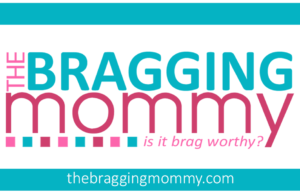If you’re growing a tiny human, first of all—go you, mama! Between the constant bathroom breaks, weird cravings, backaches, and the sheer miracle of building a baby from scratch, your body is doing Olympic-level work. And while people love to remind you to “rest” or “take care of yourself,” they rarely tell you how to do that when your body is in full production mode 24/7.

Enter: prenatal massage. It’s not just a fancy treat or a “nice-to-have.” It can be a total game-changer for your physical and mental well-being during pregnancy. But if you’ve never had one before, you might be wondering—how does a prenatal massage actually work? What makes it different from a regular massage, and is it even safe?
Let’s dive into the details so you can decide whether booking that massage might be the best thing you do for yourself this week. (Spoiler: It probably is.)
What Is a Prenatal Massage?
A prenatal massage is a specially tailored form of massage therapy designed to support women throughout their pregnancy. Unlike a typical deep tissue or Swedish massage, prenatal massage is customized to the unique needs and changes happening in a pregnant body—hello, shifting hips and sciatic nerve drama!
It focuses on areas most affected by pregnancy (like the lower back, hips, legs, and shoulders), and it avoids anything that could put pressure on the abdomen or trigger sensitive points. Certified prenatal massage therapists are trained to work safely with moms-to-be, adjusting their techniques based on your trimester and comfort level.
Think of it as a gentle, nurturing, and totally safe way to relieve tension, reduce swelling, and restore your sense of calm while your body does the hard work of growing a baby.
So, How Does a Prenatal Massage Work?
Let’s break it down from start to finish, so you know exactly what to expect.
The Setup
When you arrive, your massage therapist will probably chat with you for a few minutes about how far along you are, how you’re feeling physically, and if you have any discomfort or areas you want them to focus on. They’ll also ask about any complications or concerns, just to make sure everything is totally safe and tailored for you.
Then comes the positioning—and this is where prenatal massage really sets itself apart. Most therapists will use special cushions or bolsters to support your body. After your first trimester, lying flat on your back is usually a no-go, so you’ll either lie on your side (super cozy with pillows between your knees and under your head) or in a semi-reclined position.
Some spas even have fancy tables with belly cut-outs, but side-lying is generally the safest and most comfortable position.
The Massage Itself
Once you’re comfy, your therapist will start the massage. The pressure is usually light to moderate, with gentle strokes that help ease tension without overstimulating your body. They’ll focus on areas where pregnancy tends to bring the most discomfort—like:
- Lower back and hips
- Neck and shoulders
- Legs and feet (especially if you’ve got that end-of-day puffiness)
They’ll avoid any deep pressure on your inner thighs or abdomen, and skip over known reflexology points that could stimulate uterine activity.
The overall vibe? Calm, cozy, and totally mama-focused.
Post-Massage
After your massage, your therapist will help you sit up slowly (no sudden moves—remember that pregnancy balance!) and may offer you water. You might feel sleepy, relaxed, or just a bit floaty—which is all completely normal.
Try not to rush back into your day. Give yourself some buffer time to really soak in that post-massage glow.
What Makes It So Amazing?
The benefits of prenatal massage go way beyond “it feels good” (though yes, it really does). Here’s why it can make such a big difference during your pregnancy journey:
It Eases Back and Hip Pain
Growing a baby means your posture shifts, your center of gravity changes, and your muscles work overtime to support everything. Prenatal massage helps relax tight muscles, ease joint pain, and release tension—especially in your lower back and hips, which take a beating during pregnancy.
It Reduces Swelling
Got cankles? Totally normal. Hormonal changes and pressure on your veins can lead to fluid retention and swelling, especially in your feet and ankles. Gentle massage helps stimulate lymphatic flow, which can reduce that puffiness and improve circulation.
It Helps You Sleep Better
Pregnancy insomnia is real, and if you’ve been tossing and turning all night, a massage can help. It promotes the release of serotonin and melatonin—those happy, sleepy hormones that make drifting off feel natural again.
It Lowers Stress and Anxiety
Growing a human comes with a lot of feelings. Massage helps reduce cortisol (your stress hormone) and increase dopamine and serotonin, leaving you more grounded, calm, and emotionally balanced—even if just for a little while.
It Helps You Feel Like Yourself Again
Let’s be real—pregnancy can make you feel like your body is not your own. A massage can help you reconnect with your body in a positive, nurturing way and give you a rare moment to just be.
Is Prenatal Massage Safe?
Short answer: Yes—when done correctly.
Longer answer: It’s important to see a licensed massage therapist who is trained in prenatal massage. They’ll know how to position you safely, what pressure points to avoid, and how to adjust the massage to your specific needs and trimester.
A few safety notes:
- Most practitioners recommend waiting until after the first trimester for massage (unless your OB/midwife says otherwise).
- Always let your healthcare provider know if you’re planning to start prenatal massage, especially if you have high-risk factors like preeclampsia, clotting disorders, or complications.
- Communicate openly with your therapist. If anything feels uncomfortable—speak up!
What to Expect at Your First Appointment
Never had a prenatal massage before? Here’s how to prep so you can walk in feeling confident (and walk out feeling amazing).
Before You Go:
- Wear comfy clothes and don’t eat a heavy meal beforehand.
- Hydrate a little—massage can release toxins, and water helps flush them out.
- Think about any areas you’d like the therapist to focus on (or avoid).
During the Session:
- You’ll be draped at all times, so no worries about modesty.
- You’ll lie on your side or in a propped-up position with plenty of pillows.
- The massage will be gentle and tailored to your comfort level.
Afterward:
- Take your time getting up (no rush!).
- Drink water and, if you can, rest.
- Enjoy the blissful after-effects—many moms say they sleep better and feel more mobile for days after.
Tips to Make It Even Better
- Schedule your massage in the evening if possible—your sleep that night will thank you.
- Combine it with other self-care rituals like a warm bath or guided meditation.
- Book regularly if your budget allows—even once a month can make a huge difference.
- Ask if your partner can join in a prenatal massage workshop (yep, that’s a thing!) so they can help you at home.
Mama, You Deserve This
Pregnancy is magical. But it’s also exhausting, emotional, and straight-up hard some days. A prenatal massage isn’t just about relaxation—it’s about supporting your body, your mind, and your overall well-being as you grow your sweet little one.
So if you’ve been debating whether to treat yourself to that massage? Consider this your sign. Grab your calendar, call a certified therapist, and book that hour of peace and care. You’re doing something incredible, mama—and you deserve to feel amazing while you do it.
Have you tried prenatal massage? Thinking about it? Drop your questions or experiences in the comments—I’d love to hear from you!




